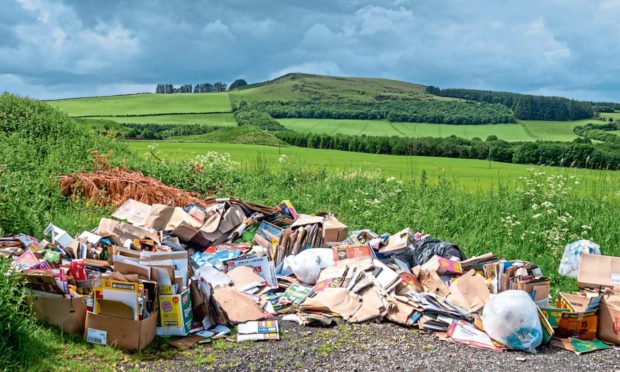The spike in fly-tipping during lockdown could be putting livestock and human health at risk after a surge in lead poisoning reports has been identified by Scotland’s food safety body.
Food Standards Scotland (FSS) has received four incident reports of lead exposure and poisoning in livestock since April 2020, which is one more than the whole period between April 2019 and March 2020 – and one of the risks for animals is old paint and fly-tipping on farmland.
It has led to FSS issuing a warning to farmers to be vigilant for signs of poisoning, particularly in sheep and cattle, and Ron McNaughton, who heads the FSS Food Crime and Incidents Unit, warned lead poisoning was not only a welfare issue for livestock but it also put consumers at risk.
“This highly toxic metal not only affects animals in many ways, for example causing nervous disease, blindness, infertility and even death, but contamination beyond legal limits in meat, offal and milk puts consumers at risk and is illegal to sell,” said Mr McNaughton.
“Lead poisoning can also be costly, through animal deaths, disposing of carcasses, veterinary fees, increased birth defects, loss of market value and decreased production, and delays in sending animals to market.”
Mr McNaughton advised farmers to check fields and barns regularly for sources of lead such as old batteries and machinery, and to watch out for fly-tipping and old paint.
He added: “Lead poisoning mainly affects cattle and sheep – pay attention to young cattle in particular, who are most at risk due to their curious nature.”
Symptoms to look out for in livestock include blindness, odd behaviour including grinding teeth, bobbing head, twitching eyes/ears, frothing at mouth, muscle tremors, staggering, excitability and convulsions.
Once an animal is showing symptoms of lead poisoning, death usually occurs shortly afterwards.
Mr McNaughton said: “If you suspect lead exposure, remove the source immediately, stop livestock access and seek veterinary advice.
“On-farm incidents can put consumers at risk if the affected animals are not restricted from the food chain.”
nnicolson@thecourier.co.uk










